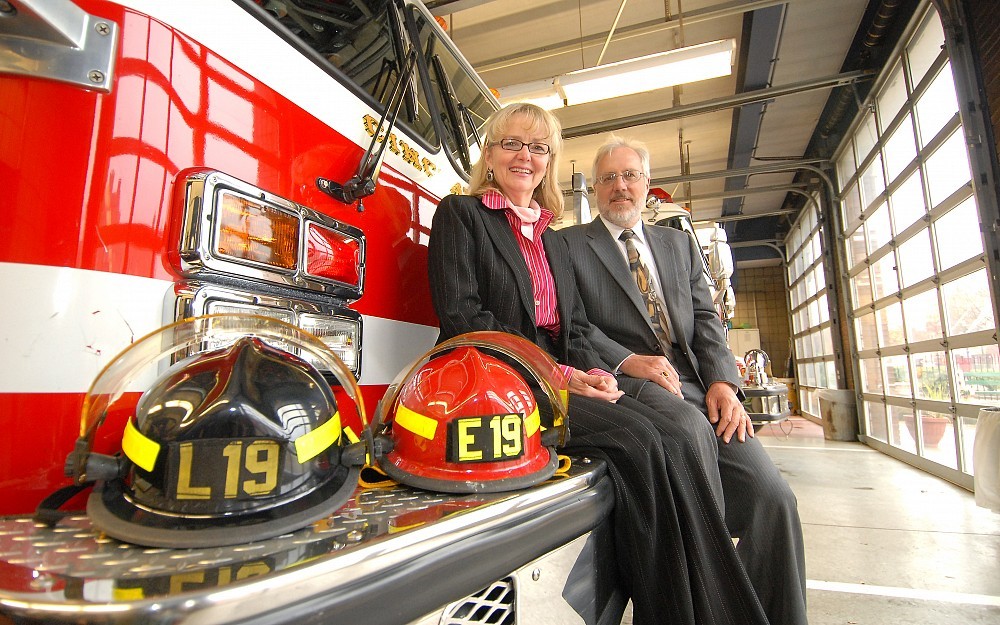
Firefighters Face Increased Risk for Certain Cancers
CincinnatiUniversity of Cincinnati (UC) environmental health researchers have determined that firefighters are significantly more likely to develop four different types of cancer than workers in other fields.
Their findings suggest that the protective equipment firefighters have used in the past didnt do a good job in protecting them against cancer-causing agents they encounter in their profession, the researchers say.
The researchers found, for example, that firefighters are twice as likely to develop testicular cancer and have significantly higher rates of non-Hodgkins lymphoma and prostate cancer than non-firefighters. The researchers also confirmed previous findings that firefighters are at greater risk for multiple myeloma.
Grace LeMasters, PhD, Ash Genaidy, PhD, and James Lockey, MD, report these findings in the November edition of the Journal of Occupational and Environmental Medicine. The UC-led research is the largest comprehensive study to date investigating cancer risk associated with working as a firefighter.
We believe theres a direct correlation between the chemical exposures firefighters experience on the job and their increased risk for cancer, says LeMasters, professor of epidemiology and biostatistics at UC.
Firefighters are exposed to many compounds designated as carcinogens by the International Agency for Research on Cancer (IARC)including benzene, diesel engine exhaust, chloroform, soot, styrene and formaldehyde, LeMasters explains. These substances can be inhaled or absorbed through the skin and occur both at the scene of a fire and in the firehouse, where idling diesel fire trucks produce diesel exhaust.
Firefighters work in an inherently dangerous occupation on a daily basis, LeMasters adds. As public servants, they needand deserveadditional protective measures that will ensure they arent at an increased cancer risk.
The UC-led team analyzed information on 110,000 firefighters, most of them full-time, white male workers, from 32 previously published scientific studies to determine the comprehensive health effects and correlating cancer risks of their profession.
Risk for 20 different cancers was classified into three categoriesprobable, possible or not likelypatterned after the IARCs risk-assessment model.
UC epidemiologists found that half the studied cancersincluding testicular, prostate, skin, brain, rectum, stomach and colon cancer, non-Hodgkins lymphoma, multiple myeloma and malignant melanomawere associated with firefighting to varying levels of increased risk.
Theres a critical and immediate need for additional protective equipment to help firefighters avoid inhalation and skin exposures to known and suspected occupational carcinogens, says Lockey, professor of environmental health and pulmonary medicine at UC. In addition, firefighters should meticulously wash their entire body to remove soot and other residues from fires to avoid skin exposure.
The research was supported in part by a grant from the Ohio Bureau of Workers Compensation. Study collaborators include UCs Paul Succop, PhD, James Deddens, PhD and Kari Dunning, PhD, as well as Tarek Sobeih, MD, PhD, of Cairo University, and Heriberto Barriera-Viruet, PhD, of the Interamerican University of Puerto Rico.

Firefighters are exposed to many harmful particulates, including benzene, diesel engine exhaust, chloroform, soot, styrene and formaldehyde.

James Lockey, MD, and Grace LeMasters, PhD, visit with District 19 Cincinnati firefighters.

Grace LeMasters, PhD, is principal investigator of the Cincinnati Childhood Allergy and Air Pollution Study.

James Lockey, MD, is a professor in UC's environmental health department.
Tags
Related Stories
UC, UC Health see frontline student training as workforce...
May 6, 2025
Amid ongoing challenges across the health care workforce, including burnout and shortages, the University of Cincinnati is working to tackle this issue through a program that embeds students in clinical settings.
University of Cincinnati College of Medicine celebrates Class of...
May 6, 2025
The University of Cincinnati College of Medicine celebrated the Class of 2025 at its annual Honors Day, recognizing graduates' achievements, resilience through the COVID-19 pandemic and commitment to compassionate, innovative care. Highlights included a 100% Step 2 pass rate, top residency matches and powerful moments of reflection and recognition.
Growing heart failure epidemic calls for prioritizing primary...
May 5, 2025
A rapidly growing heart failure epidemic calls for prioritizing primary prevention, according to a new scientific statement from the American Heart Association published in Circulation in April. The statement reviews the current evidence for predicting heart failure risk and offers risk-based strategies for heart failure prevention.
